If you have the opportunity to do some trapping for predators and choose popular DOC-series traps, here are some suggestions on how to get the best from them.
If you have the opportunity to do some trapping for predators and choose popular DoC-series traps, here are some suggestions as to how to get the best out of them.
These traps are typically mounted in wooden boxes though plastic options have recently appeared. Stoats, weasels and ferrets, (collectively called mustelids), have a fine sense of smell and so can be turned off by something they don’t like. Be careful, for instance, not to leave discarded rotten baits near the entrance. Also anything that might taint the wooden boxes, for instance, leaving them on a Diesel stained truck bed. Nor should you let your dog piddle on or near a trap. Odours like these can seriously affect catch-rates until they weather off. Be careful too of using a strong scented soap before handling traps. Much better is to rub earth into your hands to neutralise any human or other smells before touching traps.
Fish oil as a steel preservative is used by some trappers but it can also create issues. Dust and dirt sticks to it and then it dries hard. It then actually slows traps down. A much better plan is to get stainless steel versions of the DoC trap that do not need to rely on stinky rust preservatives such as fisholene. Yes, stainless traps cost a bit more, but so too does maintenance and replacement costs.
A lot of guys increase the entrance mesh holes to 100 x 100mm. Keep the entry clear of grass, for instance with a squirt of Roundup. For some reason the mesh as supplied is left cut along the bottom of the entrance leaving sharp spikes projecting above that. Use a small pair of snips to remove this entirely to make this outer entry much more inviting for these low-slung creatures. It’s a good idea to also nail inside the trap a small angled wooden ramp with a flat section after that to firstly hide the shiny vertical trap bar which may intimidate some animals, and secondly to line the animal up square with the trap plate for a cleaner catch.
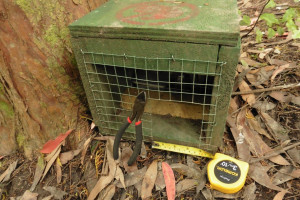
Photo 1: Trimming the entrance back and installing an angled wooden ramp.
Some traps come hastily screwed into their box with too much gap on one side. Smaller vermin can sneak around the back without crossing the plate. Likewise some traps are set too far back from the second or inside mesh opening which is meant to guide the critter directly over the kill plate. You’ll cotton on to something being wrong when you find dead vermin caught on their way out. How did they get past the plate the first time? If there is a gap you could either reposition the trap properly or, if someone has assembled the box itself a bit too wide, you can nail in behind the trap a thin piece of plywood to shim the gap away. A carpenters’ bradawl is a small sharp-pointed tool used to make a hole in wood to start off screws and similar jobs. With the trap positioned where you actually want it you can use the bradawl to mark the dead centre of the screw holes, then drill a pilot hole using these. The bradawl is also used by some trappers in the field to optionally prick the blunt end of an egg bait “to let the smell out”. If you don’t want to let the egg contents drip out and eventually go rotten inside the box as well, be sure to leave the hole facing upwards. Most people leave the egg whole. Experiment and choose what works best for you.
Trap box lids are typically supplied having only a small stencilled black warning sign that quickly fades away. Over top of this I use red spray-paint over a much larger stencil that was custom made by Parkin & Payne Ltd., Onehunga. This states in writing as well as in an internationally recognized symbol, “WARNING DON’T TOUCH”.
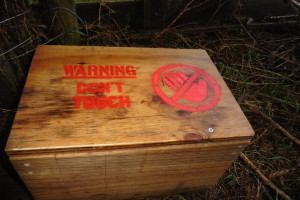
Photo 2: Now that’s what I call a warning sign!
DoC traps come with varying “spring-off” weights and if they are set too high you will be lucky to get anything. Infra-red “no-glow” game cameras set by these traps will often tell you what is going on while you are tucked up in bed. It can be annoying to see critters happily running out of the box with your lure. While these traps can be reset more lightly while still assembled, ideally the treadle should be taken out of the trap to carefully reset the sear. A fine measuring calliper can be used to judge small sear height changes. Removing the treadle requires a special jig, and a different one is required for each size of DoC trap. Sometimes the makers will supply these, sometimes you have to get them made. If the trap is brand new then consider returning the trap to the makers in exchange for a better calibrated one. The “DoCskillable” series of YouTube video series shows how to calibrate and reset these traps. Never calibrate the trap without a safety attached and, even then, be careful.
https://www.youtube.com/watch?v=11t9II2FpFk&index=5&list=PLFVxEmJHAaHpmjDSEl4vETSla2CFeKgT_
Each DoC trap, (such as 200, 250’s etc.), has a different sized safety too. Make sure you ask for one when you buy the trap. Tie something you can’t lose to it like a large bit of colourful ribbon. If the trap goes off and your hands aren’t where they’re supposed to be, the safety catch may well save you a trip to hospital.
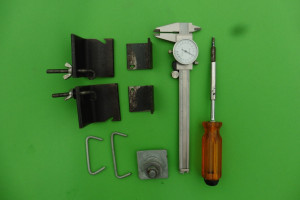
-
Photo 3: Useful tools: from top left, DoC-250 jigs, DoC-200 jigs, (for trap disassembly), dial calliper for sear height adjustment, No. 2 square-drive screwdriver (for lid screws), homemade weight caddy, (for spring-off adjustment), DoC-250 safety clip, DoC-200 safety clip.
A trap that catches a rat one end is much more likely to catch a mustelid on the other end, but only if the second trap remains poised to go off. In this trappers’ experience, double trap boxes do not work with DoC traps. The first trap violently going off invariably jars the remaining one off. This “overkill” makes the second trap redundant. I have experimented with mounting the traps on hard rubber, cutting relief slots in the trap box to interfere with the vibration wave and so on. Recently I learnt that plywood, with its multidirectional layers, will dampen shock-wave vibrations in other applications but I have yet to try this on a double DoC trap. However a Northland DoC officer has recently tipped me off with what works; don’t screw the trap into the box. This will fix the problem in DoC 200 traps but not the 250’s which are still too violent. Setting the unsecured DoC 200 trap is not going to be easy until you learn the knack, so make certain that you have that safety in place – or much safer still, just don’t use double-DoC traps!
If vermin narrowly escape being caught they will seldom fall for the same trap design again hence I believe that the DoC traps should be set in conjunction with Fenn traps to stop trap-shy predators living amongst your trap line with impunity. The humane Fenn trap has, since 1959, been the go-to trap of British gamekeepers. It is also a lot safer to use around human hands and my catch rates with Fenn traps are considerably higher than with DoC traps! If you are worried about young children having access to the trapping area, then consider using a Holden Live Trap (available on Trade Me), which works on a see-saw principle. The animal remains locked inside the trap, often asleep when you find it. The Holden trap is commonly used for Tb detection work in some regions.
What to bait with is a good question. Eggs have many advantages, such as being readily available and relatively cheap, especially if you have your own chooks or bantams. Farm eggs are, of course, not washed in chook-factory sanitising washes so retain more chicken smells. Putting a small hole in the top of eggs is purely optional. Try it with and without. There are also commercial baits:
(1) Connovation’s Eraze is like a segmented chocolate bar made from freeze-dried rabbit:
(2) Connovation’s also have cylindrical solid state baits with a central hole:
http://www.connovation.co.nz/product-details/p/240/c/79/Long%20Life%20Solid%20State%20Baits
(3) Pest Control Research sell mustelid and cat lure set in a water resisting polymer.
https://www.traps.co.nz/mustilid-cat-bait-approx-100-per-kg
These 3 lures will all last longer than fresh wild rabbit/hare meat, (rabbit or hare liver is also a good lure). However even the dried baits will soon go mouldy in damp conditions even if you provide extra rain protection, such as a bit of roofing iron, to your otherwise relatively open traps.
(4) Salmon base Lure-It aerosol is popular with some trappers, usually when used with a second lure.
http://www.connovation.co.nz/product-details/p/307/c/79/Lure%20Salmon%20For%20Stoats
Fresh meat baits in summer may last only 4 days or so but it will be a productive few days! One tip from a NZ-based international mustelid expert is to rub the rabbit’s gut contents against and around the trap entrance, on nearby trees, rocks, etc. Pile on the smell and see what happens. Don’t expect a catch every time, but persistence will pay off. Drags of dead rabbits with gut exposed can also help. Just tie a bit of rope to it and drag it past some likely habitat, such as the boundary of a rank grass area or a swamp, drain or lake edge, up to the trap entrance/s. On a hot summers’ night this might work, but before heavy winter rain perhaps not. Adding a few feathers inside the trap and also kicking up some earth around the trap entrance or making a clean track leading up to the trap also helps, the latter especially so. A gamekeeper’s motto: “Clean entry – clean catch”.
Salted rabbit will get around the fly-blown problems of fresh rabbit/hare meat but the salt is corrosive to metal traps. However if you are using plastic Holden Live Capture traps, it seems to be ideal.
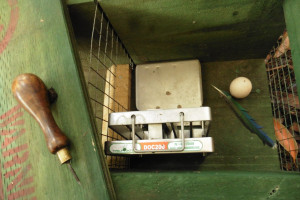
Photo 4: Sharp bradawls have several uses.
The DoC series traps are relatively open to the weather with their mesh sides but you can help bait life by putting it inside a plastic .22 rimfire ammunition packet, side on and lid removed, just under the roof. Drill a couple of holes in one end and use a cable tie to secure that to the end mesh. Don’t leave such a case unsecured or it could interfere with the trap as the animal runs off with it. A small strip of overhanging roofing iron on the trap lid will help bait life somewhat. Secure with a stone or log to weigh it down.
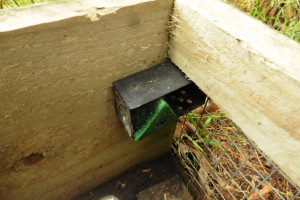
Photo 5: A rimfire ammunition packet with a few extra holes (to let the smell out), will hold bait where it is relatively sheltered, under the lid, (shown is a D-Block rat bait).
Hedgehogs will squeeze themselves down and through the smallish mesh entrance. When they get clobbered by the kill bar they are a lot harder to remove. Cheap, heavy leather gloves, (called rigger’s gloves), from a hardware store will help. These animals will predate duck and other gamebird eggs and are well worth the trouble to catch. The local quail will especially appreciate your efforts.
Where to put the DoC trap is mainly trial and error but a little thought should go into it. They should be laid out in such a way that you don’t have to go well out of your rounds to check a single outlier trap. Keep the traps out of direct sunlight and it will help meat bait life in summer. The opposite may work with dried baits so experiment. Place traps where cattle can’t knock them over and also where farming operations aren’t affected. If human interference might be a problem then consider some sort of notice explaining what they are for and pointing out it is illegal and dangerous to interfere with them. Talk to neighbours who have young kids.
Next to a stream or large drain is good trap site but always secure the trap well to something like a tree or a warratah in case floodwaters rise and float it off. Barns are great places to trap in or around because the hay inside in winter is filled with mice and this attracts mustelids. If there is a small rat sized entry hole anywhere in the barn’s side this is ideal to trap beside. Have a look also for seeding trees, be they macadamias, puriri, karaka and so on. This bounty of seeds on the ground will attract rats which in turn attracts mustelids. Rats are well worth catching in themselves as they also steal gamebird eggs and chicks. They also climb and swim well so no nest is safe. Also a trap that has just caught a rat now smells much more interesting to any mustelid that passes by. Try to think like the critters you are trying to catch. Where is their food at this time of year? Is there an offal pit nearby? Where can they find shelter? Look for a pile of logs, rocks, timber posts, old iron and such-like. If you have a pond, then of course you will want to surround the boundary to give ground nesting ducks a chance especially through spring, from early June onwards. If you are feeding duck, (where legal), or pheasants, be sure to have traps and/or poison rat baits nearby.
A trapping diary will help you spot which traps, (be sure to number them), are performing and which need shifting. Also which techniques work best. Mind you, their first catch is often all a trap needs to start working. Traps represent a not insignificant investment and, depending on where you live, it can sometimes be possible to get regional council or other funding. Fish & Game can probably assist with this. Be sure to include in any application the cost of lures (that attract animals), or baits, (that poison them). The DoC series traps don’t catch possums so you might want to add in the cost of some Timms or similar traps for these. Having a DoC trap near a Timms one can be complimentary, with the dead possum attracting mustelids. Putting a fresh possum on a trap lid will sometimes catch a stoat because it doesn’t want to be caught in the open by a hawk or similar, so it first rushes into cover under the carcass and snap! Especially if you should see the tell-tale signs of fresh mustelid feeding, (usually around the gut or on the neck), putting the recent kill on a trap lid can produce a result overnight – or sometimes in just minutes. If a stoat has been in the hen house, a dead chook carcass on the trap often gets results but remove the other carcasses to give it Hobson’s choice.
If you see a mustelid while you are out shooting and it disappears from view, you can often “squeak it out” from cover for a shot by making squeaking noises with your lips against the back of your hand. If you sound like a mouse, curiosity will draw it back out. It worked a treat for me one day, though my #5 weight trout fly rod was really the wrong calibre.
Keep in mind that predator competitions were made to encourage people just like you. So put in an entry, even if it is just 1 tail as the odds are usually good. It will also encourage the organizer and support your fellow trappers. They say that you get out of a sport proportional to what you put into it. Trapping predators is one very productive way to make your “game season” last all year round. Several Internet forums in NZ will not only put you in touch with help, advice and support from other trappers but also provide a chance to “brag your catch”.
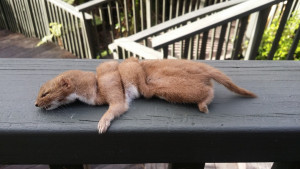
Photo 6: A “well corrugated” weasel caught near Albany in a DoC 200, (Photo courtesy of Richard Baalham). Weasels, especially female ones, are smaller and therefore hardest of all mustelids to catch, so well done.
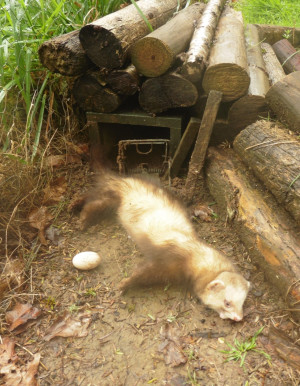
Photo 7: By having a variety of traps, (shown is a Fenn Mk4 with a ferret), you’ll eliminate trap-shy animals which learn to avoid a trap type they had a near-miss with. This trap had just been slicked up with some paraffin-based Dry-Lube on the working surfaces. This ferret died instantly though a Mk 6 Fenn is probably a better choice for ferrets, the Mk4 for weasels, stoats and rats.
John Dyer, Northern Gamebird Manager Auckland / Waikato Fish & Game